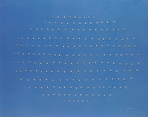Abstract
A study of the practice of dictamen among the schools and chanceries of Late medieval Europe (13th–15th c.) offers a broad range of perspectives in order to map neglected dimensions of late medieval textual cultures. It is well known that Ars dictaminis was a set of rhetorical doctrines, mostly devised for and used in the world of chanceries and for the redaction of letters and charters. But how exactly did the process of translation of a sophisticated rhetoric in an epistolary, mostly political practice, work? This paper focuses on the coalescence and the impact of the rhetoric ‘database’ constituted by the great collections of dictamina traditionally called summae dictaminis. This material served as a matrix to create an immense array of rhetorically and rhythmically similar texts throughout Europe during at least two centuries. This process transcends the disciplinary frontiers between literary and politico-administrative studies. Not only had classical ars dictaminis developed into a sort of semi-formulaic logic, a combinatory technique that was in some ways more akin to poetry than to what we would imagine under the heading of ‘letter writing,’ but the variety of texts impacted by these techniques also cancelled every genetic barrier between ‘literary’ and ‘non-literary’ textual production.Except where otherwise noted, the content of this site is licensed under a Creative Commons Attribution-ShareAlike 4.0 International (CC BY-SA 4.0).
Authors retain copyright of their work. The CC BY-SA 4.0 licence allows readers to copy and redistribute the material in any medium or format, and to remix, transform, and build upon the material for any purpose, even commercially, as long as the original author is credited and as long as any works that are derived from the original are distributed under the same terms.
Metrics
Metrics Loading ...

